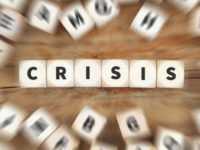Whip your crisis comms into shape with these seven bite-sized tips to help your copywriting and content marketing in this depressing, unfamiliar world.
- Yes, you DO need to change your content calendars and schedules
Did you spend the last few weeks of 2019 mapping out your blog topics, emails and social content for the year ahead?
If so, go back to the drawing board.
I’m not saying you’ll have to change everything. But you will need to scrutinise your subject matters carefully, asking yourself if they still apply – and how your audience’s priorities have shifted.
And if you have automated emails and scheduled posts such as birthday offers, you need to cancel them. Quickly. - Your content shouldn’t ignore the crisis (at least for the time being)
Not all your blogs, social posts, eDMs and media releases need to directly relate to the crisis. But by the same token, you don’t want to appear stuck in your pre-COVID-19 marketing bubble.
If you ignore the issue completely, you risk looking insensitive or tone-deaf.
But whatever you do, avoid piling into the coronavirus conversation just for the hell of it. You need to give context – and make the relevance clear. - If you don’t know what your customers want, ask them
Luxury or non-essential items like clothing, jewellery and skin products can seem irrelevant in times of crisis.
And you don’t want to appear tactless by trying to flog your “frivolous” products like you have always done.
But does that mean your customers want you to stop marketing completely?
There’s only one way to find out: ask them.
Questions like “Do you still want to hear about our new collections?” or “Do you need a break?” shows care and sensitivity. - Don’t send an email about the C-word just because
“‘Yay, another obligatory COVID-19 email blast!” – said no one ever!
You want your customers to know you’re responding to the situation in some way. But if your email doesn’t add value or share new information, don’t send it.
And if you think that your team’s regular hand washing routines or working-from-home arrangements qualify as valuable or new, you’re grossly mistaken. - The “less is more” principle has never been more important
Although brevity is always preferred, right now, it’s critical.
Before you send an email out, make sure your only telling your audience about things that directly affect them.
Also, be ruthless about ditching every redundant word, rambling sentence and gratuitous formality. - And please, don’t state the obvious
Don’t tell people that this situation is “unprecedented”. Don’t tell them the economic impact is significant. And I beg you, don’t tell them that we’re all facing a lot of uncertainty.
By stating the obvious, you’re insulting their intelligence and wasting their time. Even worse, you’re probably adding to their anxiety too. - Find less intrusive ways to update your audience
Even if you do have something new to share, sending another godforsaken email blast is not the only way to do it.
Try placing a standard message at the bottom of all team members’ email signatures. Or adding a short sentence in the header or footer of your e-newsletters.
This will ensure you get your message across to those who are most likely to care – the people you are in regular contact with anyway.
In the next instalment we’ll look at seven more strategies to lift your content and ensure you’re really communicating with customers, actual and potential, in these trying times.
Vikki Maver, Founder, Refresh Marketing











